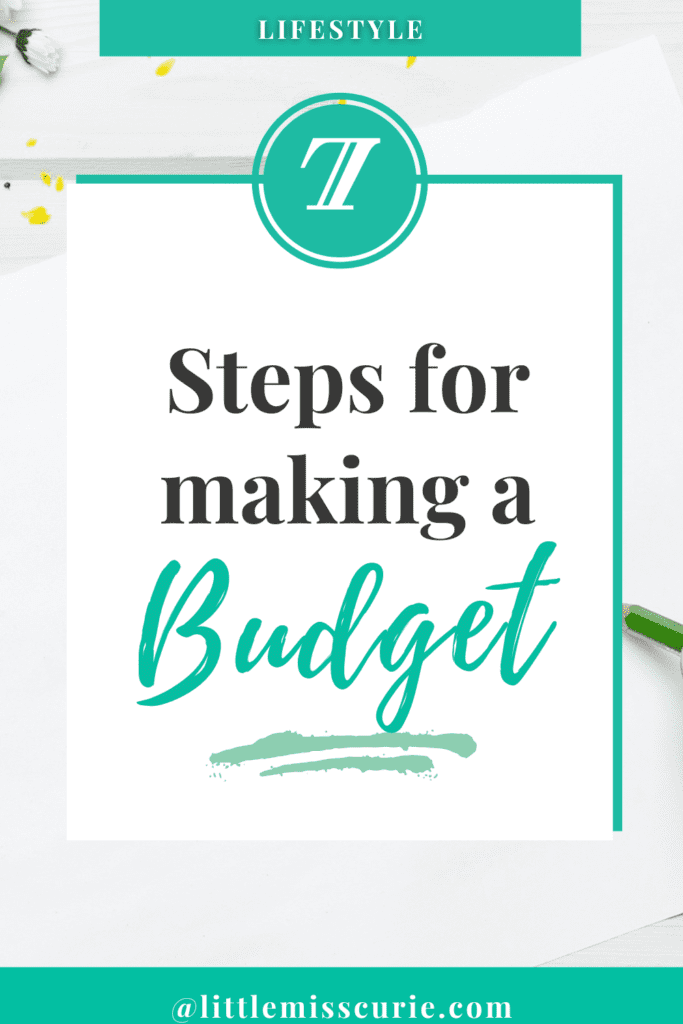This post features 16 mother-daughter date ideas for mother’s day. So mother’s day is literally right around the corner and I’m kinda sick of...
This post features a beginner-friendly guide on how to make a budget.
So, you’ve realized that you’re bad with money. Welcome to the club babes!
Many of us aren’t taught financial management at home. It’s unfortunate, but it is what it is.
The problem, though, is that when we eventually have to go out on our own, we’re literally clueless.
Zero money management skills, zero budgeting skills and it’s a struggle to cover our bills half the time.
But that’s why we need to learn how to make a budget.
The good news is that making a budget is not hard.
A lot of people get intimidated because they don’t know where to begin or they don’t wanna do anything wrong.
But the truth is, there’s never a wrong way to go about budgeting.
As long as you’re keeping track of the right things and allocating your money properly you’re golden.
But how do you know what the right things are?

Well, that’s what we’ll be covering in this guide.
But first…
What is a budget
To understand how to make a budget you first need to understand what it is.
A budget is a plan or estimate for how you’ll spend and save your money.
It helps you track how much money is coming in, going out and how much you’re saving in a given period.
Think of it like a road map to your financial goals.
It tells you where your cash should go and helps you avoid that sinking feeling of watching your check disappear into thin air every month (I can definitely relate).
So now that you know what it is…
Here are 7 steps to follow when making a budget
Step 1: Figure out your income
You’d be surprised at how easy it is to mess this part up. Most people think ‘hey my grandma sends me money sometimes, I’m gonna include that in my budget.’
But hear me out for a second- I don’t think you should…
A budget is made of estimates, but we should always try to be as accurate as possible.
The income you budget for should be what you are consistently receiving on a monthly basis. Think your paycheck, your side hustle money or any extra cash you get regularly.
If you’re budgeting for money that your uncle will maybe send you two times a year then you’re just setting yourself up.
Only budget for income streams you can count on. And if your income is not the same every month, take the average of your last six months and use that as your anticipated income.
This way you have an accurate base to anchor you whether you receive the extra funds or not…
Step 2: List Your Expenses
Now the expense part of budgeting is easy.
Our cash outflows are generally separated into two main categories: our must-pay (fixed) expenses, and our flexible (variable) spending.
Our must-pay expenses are exactly what they sound like- expenses we can’t avoid no matter what. These include car payments, student loan debt, rent/mortgage and other similar payments.
The good thing is that these are generally the same amount per month, so they’re easy to track and account for.
Our variable expenses are a little more tricky. They depend on our past spending habits and preferences; so think takeout, streaming services, groceries, hobbies.
These are things that may or may not cost the same amount every month, but the principle for budgeting them still remains the same.
If you do not spend consistently on these things don’t budget them as expenses. Calculate the average amount you spend on your more than one-time purchases, and that is what you put in your expense column.
Step 3: Create your ‘on a whim’ fund
Now for those of you who were already eating me up about not accounting for your one-time and non-regular purchases, relax I was getting there.
Your ‘on a whim’ fund is basically a set amount you put aside per month for stuff you didn’t anticipate buying, or don’t plan to buy regularly.
So that Hershey bar you had a random craving for, or your mom’s Christmas gift, or your paint-by-numbers set…
The amount you budget for really depends on you, but you can’t not plan for impulse buys.
Step 4: Create your ‘Emergency’ fund
Your emergency fund, though, is a whole different beast.
The goal of this fund is to provide a cushion for you in case anything major happens and you’re a little strapped for cash.
So this would cover medical expenses, unexpected car repairs or even job loss.
I recommend you budget for a percentage of your monthly expenses (however much you spare), and put it aside for a rainy day.
When all is said and done, as long as you also budget for unforeseen events then you’ll be better able to withstand close calls and financial shocks.
Step 5: Make a game plan
So now that you have an idea of what should be in your budget it’s time you learned how to structure it.
The general rule of thumb is the 50/30/20 rule.
This basically advocates for allocating 50% of your income towards essentials. Think food, rent, bills, etc.
The 30% should be dedicated to your wants. So entertainment, subscriptions, takeout, and your on-a-whim purchases would fall under this category.
The remaining 20% should be for savings and debt. So this would include your emergency fund, loan payments etc.
Of course, you don’t have to follow this rule to a tee, it really depends on your situation, so feel free to customise it as you see fit.
Step 6: Track Your Spending
A budget only works if you actually stick to it.
Use a budgeting app (like Mint or YNAB), a spreadsheet, or even just a notebook to track your spending.
The goal is to make sure you’re following your plan and not overspending. You really have to be your own keeper when it comes to budgeting.
Step 7: Adjust as You Go
Your budget isn’t set in stone!
If your income changes or unexpected expenses pop up, tweak your budget. Check in on your finances every month and make adjustments when needed.
Remember, budgets are made of estimates so you shouldn’t beat yourself up if you’re a little off sometimes.
The important thing is that you adjust, and make sure that you give yourself a real shot at healthy and structured finances.
So there you have it. What were some mistakes you made before learning how to make a budget? Let me know in the comments!

